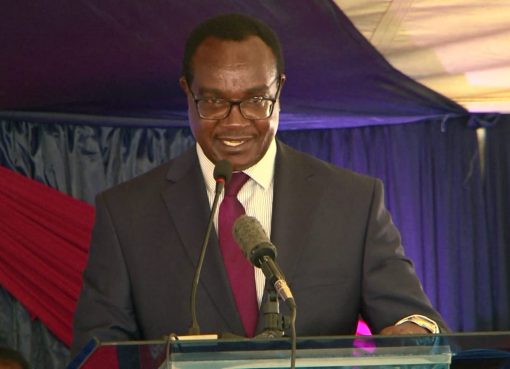The Sh 5.3billion Lower Nzoia Irrigation Development Project and Improvement of flood mitigation has kicked off, the Project Manager Eng. Edwin Manyonge has said.
Speaking to the press after paying a courtesy call on Busia Governor Sospeter Ojaamong in his office on Wednesday,Eng. Manyonge said works have begun with the construction of a river diversion and an intake structure.
He added that the project aims at reducing flood risk and mitigating against frequent flooding in the Lower Nzoia between Rwambwa and Lake Victoria where most of the flooding occurs.
“The proposed project entails improvement of about 34km of flood mitigation dykes in the lower Nzoia River and development of infrastructure for irrigating an area estimated at 4, 000 hectares,” he said.
Engineer Manyonge explained that the said the project entails dyke rehabilitation at a cost of sh1.4b and irrigation at a cost of Sh3.8b.
“Total displacement budget amounts to Sh1.5”, he said adding that Sh450m for compensation of the persons affected by the project has already been received by the Ministry of Water and Sanitation from the National Treasury.
Eng. Manyonge said their talks with the Governor centred on the progress they have made on the ground, and his input on community mobilization and sensitization so that those whose land has not been adjudicated can vacate it to pave way for quicker completion of the project.
The team from Lower Nzoia Project included representatives from the National Irrigation Board (NIB) and the Implementation Support Consulting Team.
The total irrigable area for Lower Nzoia Basin is 62,500 acres (25,000 ha) with 50 per cent of the irrigation area devoted to high value crops like fruits, vegetables and the other 50% to rice in rotation with soya beans, cereals and other legumes.
Chief Officer for Trade and Cooperatives Nelson Kwamini said those funding the project, the National Government, the World Bank and KfW, have set aside Sh200million in loans to cooperative societies and farmers.
“They will also promote value chain for rice by putting up a rice processing mill at Mogombe Cooperative Society. This will make local supermarkets supplied with our home-grown rice,” he said.
Early last month, Budalangi MP Raphael Wanjala blamed the National Land Commission for delaying the project by one year.
The flagship project of the Kenya Agricultural Sector Development Strategy (ASDS) and Kenya Vision 2030 is expected to contribute to food security, economic growth and enhanced climate resilience for farmers in Busia and Siaya counties.
By Salome Alwanda



